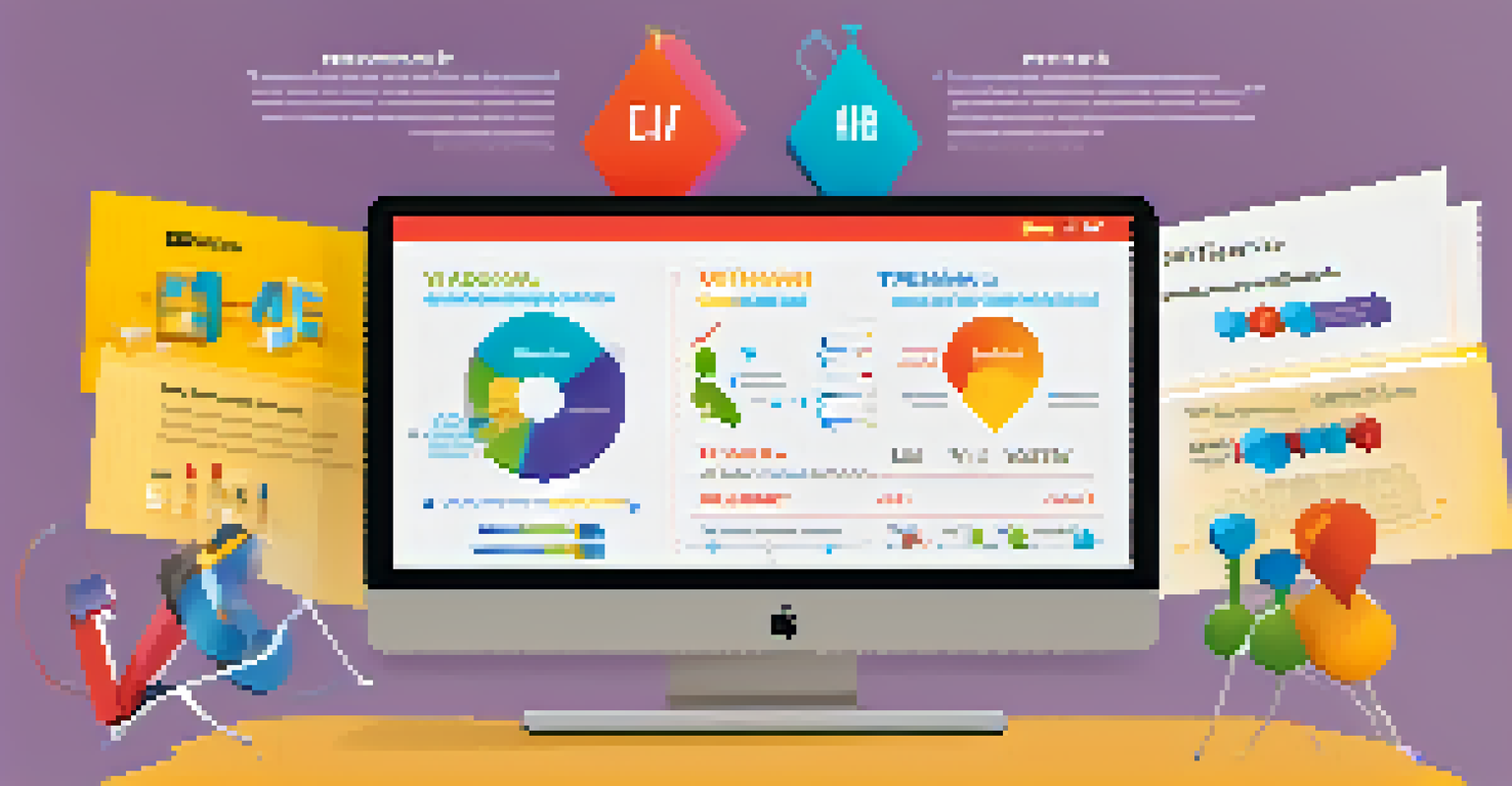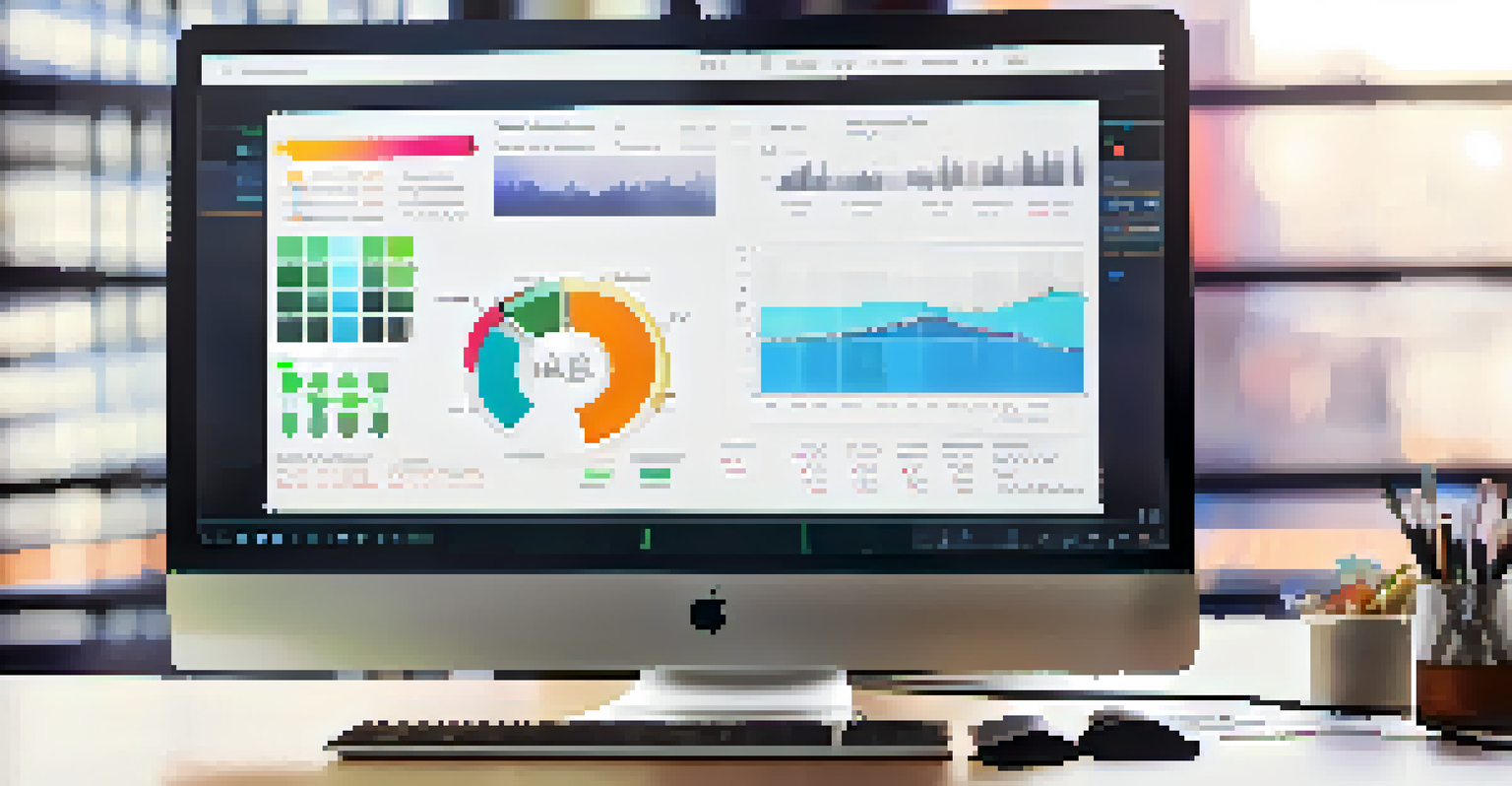Implementing A/B Testing to Refine Marketing Campaigns

Understanding A/B Testing: The Basics You Need to Know
A/B testing, also known as split testing, is a method where two versions of a marketing asset are compared to see which performs better. Imagine you have two different headlines for an email campaign – A and B. By sending one version to half of your audience and the other to the rest, you can clearly see which resonates more with your recipients.
In the world of marketing, A/B testing is the bridge that connects intuition with data-driven decisions.
This testing method allows marketers to make data-driven decisions rather than relying on guesswork. With A/B testing, you can tweak elements like subject lines, images, and call-to-action buttons to determine what captures your audience's attention most effectively.
Ultimately, A/B testing is about optimizing your marketing efforts. By understanding the preferences of your audience, you can refine your strategies, leading to better engagement and conversions.
Identifying Goals for Your A/B Testing Campaigns
Before diving into A/B testing, it's crucial to identify what you want to achieve. Are you aiming to increase click-through rates, improve engagement, or boost sales? Establishing clear goals will guide your testing process and help you measure success accurately.

For instance, if your goal is to enhance email open rates, you might test different subject lines. Alternatively, if you're focused on conversions, you could experiment with various landing page designs to see which leads to more sign-ups or purchases.
A/B Testing Enhances Marketing Decisions
By comparing different versions of marketing assets, A/B testing allows marketers to make informed, data-driven choices.
Having specific, measurable goals not only helps in selecting what to test but also provides a benchmark for analyzing results. This way, you can ensure your testing efforts align with your overall marketing objectives.
Choosing the Right Elements to Test in Your Campaign
Selecting the right elements to test is key to effective A/B testing. Common aspects to experiment with include headlines, images, call-to-action buttons, and even the layout of your content. By focusing on high-impact elements, you can maximize the benefits of your testing.
Without data, you're just another person with an opinion.
For example, if you have two different designs for a landing page, testing which layout leads to more sign-ups can provide valuable insights. You might discover that a more streamlined design encourages users to take action, while a cluttered page does the opposite.
Remember, not every element needs to be tested simultaneously. Start with one or two variations and expand as you gain insights. This approach prevents overwhelming your audience and ensures clearer results.
Setting Up Your A/B Test: Tools and Techniques
To conduct A/B testing effectively, you'll need the right tools. There are various platforms available, like Google Optimize or Optimizely, that make it easy to create and manage tests. These tools allow you to set up experiments without needing extensive coding knowledge.
Once you've chosen a tool, you can implement your tests by defining your audience segments and distributing the variations. Most platforms provide user-friendly dashboards that track performance metrics, making it easier to analyze results.
Establish Clear Goals for Testing
Identifying specific, measurable objectives helps guide A/B testing efforts and accurately assess success.
It's also essential to ensure your test runs for a sufficient amount of time to gather meaningful data. Running tests for too short a period can lead to skewed results, as you might not capture the full behavior of your audience.
Analyzing A/B Test Results for Informed Decisions
After running your A/B tests, the next step is analysis. Take a close look at the data collected and compare the performance of your variations against your established goals. For example, if one email version has a significantly higher open rate, it’s clearly the more effective choice.
Don’t just focus on the numbers, though; consider the context behind them. An increase in clicks might be influenced by factors like timing or audience demographics, so be sure to examine the bigger picture.
Based on your findings, you can make informed decisions about which elements to implement in your marketing strategy moving forward. Remember, A/B testing is an ongoing process, and continuous optimization can lead to long-term success.
Scaling A/B Testing for Broader Marketing Efforts
Once you're comfortable with A/B testing, consider scaling your efforts across different channels. This could mean applying your testing strategies to social media ads, website copy, or even content marketing. The principles of A/B testing remain consistent, regardless of the platform.
For instance, you might run A/B tests on Facebook ads to determine which images or messaging drive more engagement. By applying these learnings across your marketing channels, you can create a cohesive strategy that is informed by data.
Avoid Common A/B Testing Mistakes
Steer clear of pitfalls like testing too many elements at once and running tests for insufficient durations to ensure reliable results.
As you scale your testing, keep in mind that each channel may have its unique audience behavior. Adapt your approaches accordingly to ensure that your tests remain relevant and effective.
Common Pitfalls to Avoid in A/B Testing
While A/B testing can be incredibly beneficial, there are common pitfalls that can undermine your efforts. One major mistake is testing too many variables at once, which can confuse the results and make it difficult to determine what truly influenced performance.
Another issue is running tests for too short a duration. If you don’t allow enough time for proper data collection, you risk making decisions based on incomplete information. Always aim for a sufficient testing window to ensure reliability.

Lastly, be cautious of confirmation bias – the tendency to favor information that confirms your pre-existing beliefs. Approach your test results with an open mind, and be willing to adapt your strategies based on what the data tells you.